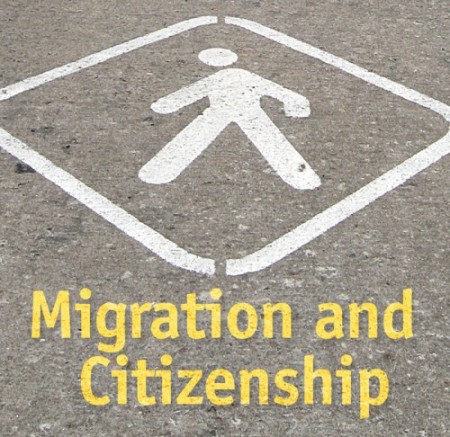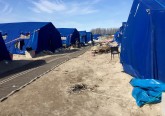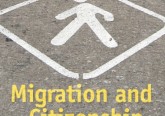 In line with the growing socio-economic and political significance of immigration, Europe has seen a wide range of policy measures aiming at either halting migrants from reaching Europe or deterring them from settling in their preferred countries of destination (Gibney 2004).
In line with the growing socio-economic and political significance of immigration, Europe has seen a wide range of policy measures aiming at either halting migrants from reaching Europe or deterring them from settling in their preferred countries of destination (Gibney 2004).
One of the implications of these policy efforts has been to turn the Mediterranean into a highly militarised zone. Yet the collapse of the political structures of several North African countries in the early 2011 was a huge blow for bilateral and multilateral cooperation mechanisms. In particular, immigrant arrivals to Europe through Lampedusa, an Italian island and one of the closest points from the African mainland, triggered a range of public and political discussions.
It is important to reflect upon the symbolic power that immigration possesses in European domestic politics. The social construction of immigration as a threat have shaped the national and EU-level responses to the arrivals of immigrant and asylum-seekers in the western Mediterranean. Most public and political worries were about irregular migration, a major challenge to the very idea of state borders.
Italy concluded bilateral readmission agreements with the regimes in Tunisia (April in 2011) and Libya (June 2011). Unstable conditions in these countries led to some 43,000 arrivals from the region between mid-January and late-June 2011 (UNHCR 2011). Even still, the surge of arrivals to Lampedusa was not predicted. Yet, as the collapse of the political regimes in Tunisia and Libya clearly showed, in the absence of any authority enforcing the previously concluded bilateral agreements with Italy, new arrivals of immigrants and asylum claimants are likely to continue.
This situation has become an emergency for Italian politicians. Improvised ‘camps’ and ‘installations’ in Lampedusa lack the necessary capacity and facilities to keep migrants detained. There has been constant unrests inside these facilities and attempted escapes were common.
To tackle this situation the Italian government provided temporary residence permits for humanitarian reasons. But this reactive policy caused its own problems, as the humanitarian emergency in Lampedusa threatened domestic stability and security. Many blamed EU-level developments over the past decade (and there is some truth to this). As Geddes (2006: 166) has noted, security oriented approaches towards immigration at the EU-level pushed southern European countries to increasingly tighten external border controls.
Unsurprisingly, Italy’s policy move led to discontent among EU Member States. The strongest reaction came from France, which halted train services from border regions and sent irregular immigrants back to Italy. The Franco-Italian disruption then reached new heights when Paris called for a reform of the Schengen Treaty (Nascimbene and Di Pascale 2011: 354).
Elusive solutions
Not much has changed since the events of 2011. The tragedy that happened in October 2013, when 366 migrants drowned in a shipwreck off the coast of Lampedusa, once again put the Italian island on the front pages. In response, Italy set up a rescue operation programme under the name Mare Nostrum, ‘our sea’, aiming ‘to control the flow of migrants who try to enter Europe by boat, and to assist vessels in distress’ (Povoledo 2014). Yet, the program still calls for increased EU burden-sharing. The former interior minister of the Letta cabinet, Angelino Alfano, was among those who were most vocal. He demanded the EU to put its flag on Mare Nostrum and argued that Italy would otherwise ‘let migrants with right of asylum leave for other countries’ (O’Leary 2014). What (re)generates such an alarmist political discourse is the old Brussels’ policy priority to secure European borders against further migration from the Mediterranean (Fargues and Fandrich 2012). While the official aims of policy frameworks such as the EMP (Euro-Mediterranean Partnership) and the ENP (European Neighbourhood Policy) were to create an area of dialogue, peace, stability and prosperity in the Mediterranean, the on-going friction between the Italian government and its European partners remains.
Alas, without enhanced forms of cooperation, both the EU institutions and the member states seem unable to cope with the on-going Mediterranean crisis. Setting up an intra-EU relocation scheme based on a system of quotas, which would more equitably distribute refugees and asylum-seekers across 28 countries, would ease part of the pressure on Italy. Yet, in the absence of commonly shared policy priorities and clearly defined EU immigration policy agenda, it is not very likely for such a scheme to emerge soon and function efficiently. Furthermore, the fact that immigration is a highly politicised and incendiary topic across the EU makes managing migratory arrivals a difficult task for the policy-makers in Brussels. In order for real change to happen, European politicians should resist the temptation to criminalise and further politicise immigration. Instead, additional legal entry channels should be created through tighter collaboration among the member states. The core problem does not lie with irregular migration, but with dysfunctional immigration policies and alarmist rhetoric.
References
Fargues, Philippe, and Christine Fandrich. 2012. “Migration after the Arab Spring.” Migration Policy Centre Research Report 2012/09. Fiesole: Robert Schuman Centre for Advanced Studies, European University Institute, accessed 15 February 2015, http://cadmus.eui.eu/handle/1814/23504.
Geddes, Andrew. 2006. The Politics of Migration and Immigration in Europe. London: SAGE Publications.
Gibney, Matt. 2004. “Interpreting asylum, key questions for an improved regime.” Tidsskifret Politik 7 (3): 56 – 57.
Nascimbene, Bruno and Alessia Di Pascale. “The ‘Arab Spring’ and the Extraordinary Influx of People who Arrived in Italy from North Africa.” European Journal of Migration and Law 13 (2011): 341- 360.
O’Leary, Naomi. 2014. “Italy threatens to release refugees into EU unless help increases.” Reuters, 13 May, http://www.reuters.com/article/2014/05/13/us-italy-migrants-idUSBREA4C0FP20140513.
Povoledo, Elisabetta. 2014. “At Least 14 Die as Migrant Boat Headed for Italy Sinks off Libyan Coast.” The New York Times, 12 May, http://www.nytimes.com/2014/05/13/world/europe/at-least-14-die-as-migrant-boat-headed-for-italy-sinks-off-libyan-coast.html?_r=0.
UNHCR, Update No. 30 – Humanitarian situation in Libya and the neighbouring countries, June 22, 2011, accessed August 10, 2011, http://www.unhcr.org/4e0201a09.html.






No Comment